 The Papua Volunteers Corps
The Papua Volunteers CorpsThe Papuan Volunteers Corps was set up in February 1961 to ensure Papuan involvement in protecting the interests of former Dutch new Guinea. It was primarily established for political reasons as part of the Ten Year Plan in 1960 by Cabinet De Quay. Military motives were of secondary interest. The Dutch Government wanted to accelerate the development of the colony in preparation for New Guinea’s independence…
lees meer Love story of missionary in the tropics
Love story of missionary in the tropicsOn Valentine’s Day 14 February 2008, the regular feature ’Andere Tijden’ , a history-based program on Dutch television, broadcasted a poignant story about the forbidden love between a Dutch missionary and a young Papuan woman living in former Dutch New Guinea. Their relationship became a huge scandal and the couple fled into the jungle to escape the fury of the local bishop. When they married,
they…
lees meer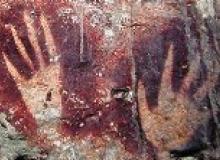 Pre-historic drawings Little is known about prehistoric times in former Dutch New Guinea. Because of the inhospitable landscape and fast growing vegetation in the rainforests, only a few traces of the past remain. The semi-nomadic lifestyle of the indigenous people does not leave much evidence to go on either. The first inhabitants of New Guinea are thought to have migrated to this island via South-east Asia around 50.000 years ago. It…lees meer
Pre-historic drawings Little is known about prehistoric times in former Dutch New Guinea. Because of the inhospitable landscape and fast growing vegetation in the rainforests, only a few traces of the past remain. The semi-nomadic lifestyle of the indigenous people does not leave much evidence to go on either. The first inhabitants of New Guinea are thought to have migrated to this island via South-east Asia around 50.000 years ago. It…lees meer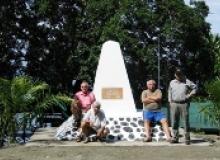 DETA Boys in Hollandia after the war A memorial, along the road between Jayapura and Lake Sentani, was unveiled on 18 November 2004 to commemorate the first DETA-men who arrived on New Guinea soil 55 years ago. The memorial was created by former DETA-men Daan Sahetapy, Nico van Balgooij and Ruud Tomasow.
DETA Boys in Hollandia after the war A memorial, along the road between Jayapura and Lake Sentani, was unveiled on 18 November 2004 to commemorate the first DETA-men who arrived on New Guinea soil 55 years ago. The memorial was created by former DETA-men Daan Sahetapy, Nico van Balgooij and Ruud Tomasow.Just before the transfer of the Dutch East on 27 December 1949, the Dutch Government engaged more than a 1000 young men of Dutch-Indonesian…lees meer
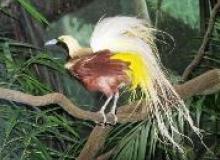 Bird of Paradise: Dancer of the jungle
Bird of Paradise: Dancer of the jungleThe male bird of paradise with its strikingly colourful plumage is an amazing spectacle in the jungle of New Guinea jungle. In the mating season, its bright red, yellow and blue feathers stand out against the green of the rainforest. This special bird belongs to one of the most beautiful in the world and it has inspired many an artist. Papuan peoples, on in the Indonesian part of the island and n Papua New…
lees meer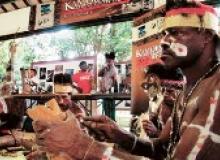 Renaissance of Kamoro Culture
Renaissance of Kamoro CultureAn elongated stretch of land along the south-west coast of New Guinea (Papua) is the home ground of the Kamoro. Adapting to the shifting tides, this semi-nomadic tribes live in various places along the coast from FakFak to Merauke. But as is the case every where, the modern world has infiltrated their lives. The American mining company Freeport which operates in this area, has led to the Kamoro becoming a…
lees meer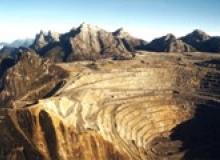 Amungme: Mountain Papuans deprived of their landThe Amungme population consists of a population of about 13000 people in the Indonesian province of Papua. Under the Dutch they used to live in 17 valleys on the southern flanks of the Central Mountain Plateau of Former Dutch New Guinea. They were hunter gatherers who also had rotating gardens and they were totally self-sufficient.
Amungme: Mountain Papuans deprived of their landThe Amungme population consists of a population of about 13000 people in the Indonesian province of Papua. Under the Dutch they used to live in 17 valleys on the southern flanks of the Central Mountain Plateau of Former Dutch New Guinea. They were hunter gatherers who also had rotating gardens and they were totally self-sufficient.These days many Amungme live elsewhere as they have been chased of their…lees meer
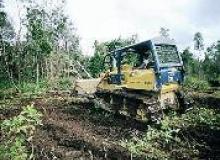 Deforestation threatens Papua Culture
Deforestation threatens Papua Culture
Papua, the Indonesian part of the island of New Guinea, belongs to the lungs of this world as it contains 31,5 million acres of tropical rain forest.
If the trees were to be cut, it would mean a threat to the livelihood and culture of many Papuan tribes. Deforestation means the destruction of their medicinal and food resources, expelling their ancestors and committing a heinous crime against nature.…
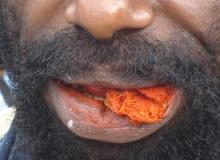 Chewing Pinang a popular past time in PapuaChewing Betel nut is a popular past time in Papua for both young and old. In Jayapura one can see plenty of people with bright red teeth as well as the resulting red coloured streaks of spit along the ground. In Bahasa Indonesia it is known as “Makan Pinang”. The chewing of the Areca Palm nut is a 2500-year-old tradition in Malaysia and in the rest of South East Asia.
Chewing Pinang a popular past time in PapuaChewing Betel nut is a popular past time in Papua for both young and old. In Jayapura one can see plenty of people with bright red teeth as well as the resulting red coloured streaks of spit along the ground. In Bahasa Indonesia it is known as “Makan Pinang”. The chewing of the Areca Palm nut is a 2500-year-old tradition in Malaysia and in the rest of South East Asia.
It is used by farmers and fishermen to…
lees meer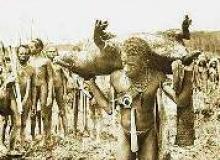 Pigs and Pig Ceremonies in New Guinea
Pigs and Pig Ceremonies in New Guinea
Pigs play a very important role among the people of Papua (former Dutch New Guinea), and especially so among those living in the Central Highlands. Apart from pigs and deer, originally brought in by the Europeans, there are not many mammals on this island. The wild pigs in Papua are similar to those in Dutch national park, but they are skinnier.
Pigs are not only bred for their meat, but they also…